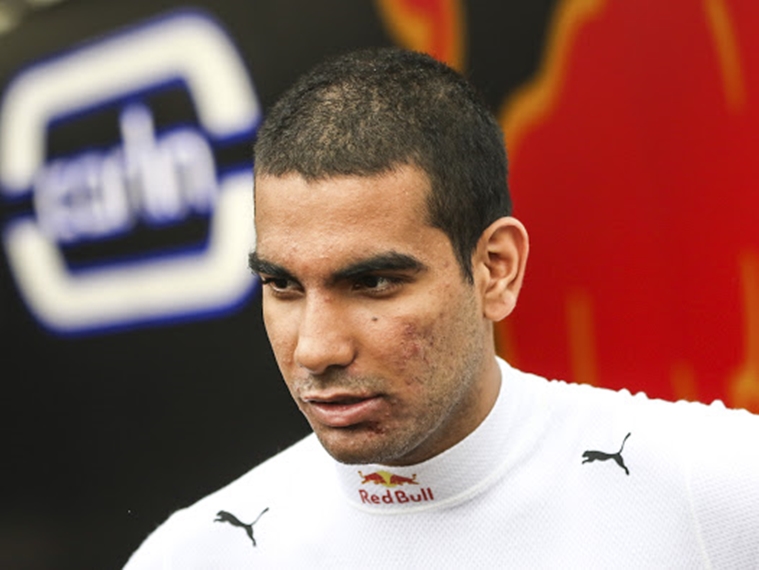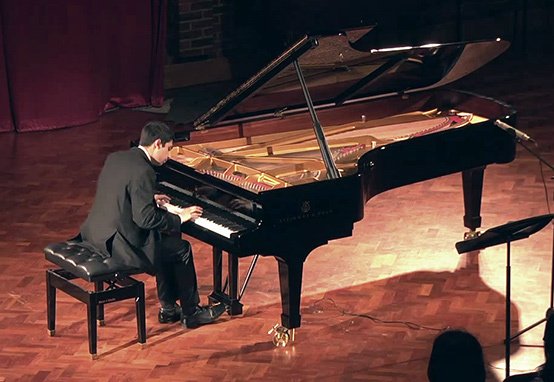Formula 2 driver Jehan Daruvala hoping for so much more in sophomore year
After finishing rookie season in F2 with a win, 22-year-old Daruwala talks about the takeways.
A maiden win in Formula 2, the national anthem playing when standing atop the podium, his father watching him from the stands. Jehan Daruvala’s tough rookie season ended on a good note at the Sakhir race track in Bahrain on Sunday.
The graduation from Formula 3 to 2 hasn’t been a smooth drive as expected. The 22-year-old Indian struggled to get his race starts right for the first half of the season, experienced the frustration of a troublesome engine, which needed replacing, and had to learn how to preserve tyres while driving a car which accelerates from 0 to 100 kmph in less that three seconds and is notorious for burning rubber. Over two weeks in Bahrain, he finished third during the first weekend – his first podium – before winning seven days later. The Red Bull Junior driver also held his own by defending his position and regaining his place in races against one of the most famous surnames in single-seat racing, Mick Schumacher. The F2 title-winner, son of former seven-time champion Michael has broken into Formula One as Haas gave him a seat for next season, a path F2 drivers like Jehan aspire to take.
Jehan’s battle with Schumacher last weekend was thrilling. Schumacher, the race leader, after getting fresher tyres during the pitstop was in Jehan’s mirrors. The German caught up and was 0.7 seconds behind third-placed Jehan with five laps remaining. With three laps to go Jehan had to fend off during wheel-to-wheel racing around corners to defend his position.
“Last week I was on a different strategy to Mick. I was on a long stint on hard tyres and he had just pit and come out on soft tyres. He was bound to catch me up at the end of the race. It was always going to be close. At the end of the day, as a driver you just have to make it as hard as possible, defend as hard as you can and keep the car behind. So I didn’t really think who it was or what he was fighting for. I just tried to be a stern as I could in defence and in the end it paid off,” Jehan said.
On Sunday, he had to get past Schumacher before battling it out with Daniel Ticktum to take the lead with less than 10 laps to go for his first win.
“Feels good when you are standing there and the national anthem plays. I remember when I was at the Wankhede Stadium for the cricket world cup and the national anthem would play, I used to feel really proud. And now it was playing for me,” Jehan, who races for Carlin Motorsport, says. His family regularly travels to races but this year because of the pandemic it was only his dad who made a trip for the last round in Bahrain.
“My father was there, I hugged him, met the team crew, spoke with my mom, sister and grandmother later in the evening. This was the only race where my father attended this year,” Jehan says.
His first year in Formula 2 has been a learning curve with tyre and brake management being challenges, apart from an engine issue which robbed him of power for a good part of the season.
Caring for tyres
The Pirelli tyres have to be treated with care, Jehan says. Push them too hard and a race could be effectively over in a few laps. The level of tyre degradation is much more than in Formula One or even Formula 3, from where he has moved up.
“These Pirelli tyres that we have are very sensitive to things you do. There is thermal degradation (overheating), if you push too hard on these tyres. You can go from being in control of the race to being outside the points in a matter of laps. So it makes it very hard for us to push very close to the limit because the car can start sliding,” Jehan says.
 The Pirelli tyres have to be treated with care, Jehan says.
The Pirelli tyres have to be treated with care, Jehan says.
At times, he has had to bide his time and even lose a position or two early in the race, because it could come down to who has better tyres towards the end. “Formula 2 is known for its high degrading tyres so I think it is a harder series in terms of tyre management. I think in Formula 3 last year there was definitely a lot of loss (tyre degradation) and from what I hear in Formula 1 it is a lot less than in Formula 2.”
The quest to make racing exciting for viewers and a heavier car all contribute to lower tyre life.
“I think it is a mixture of quite a few things. Firstly the car itself is quite heavy, almost 800 kilograms with a driver. Secondly it makes the racing exciting, for the viewers. If you have tyres that last the whole way, drivers would be pushing the whole way. But there would be less racing. Here it makes the sport a bit more exciting for the fans. You have to be on the top of your game, a small lock-up and these tyres completely flat spot and the race is completely over,” Jehan adds.
Clutch challenge
Race starts have been a tense-affair for Jehan. It takes time to get used to the bite point of the clutch in the Formula 2 car, he says “It is really hard to explain how these clutches work. We use two paddles and the hand clutch (all behind the steering wheel). The bite point on the clutch is always changing and it is hard to predict. Over a period of time after analyzing the data from the clutch a lot, you start to find the right area where the clutch is always working.
With so much horsepower you can’t just start at 100 percent throttle, we use very little throttle to get off the line. Over the last 8 races I have had consistently good starts, it is not easy. You always get one or two starts where things don’t go the right way. You can easily lose a lot of positions.”
Managing brakes
Stepping up to Formula 2, which is ‘four to five seconds faster’ in comparison to a Formula 3 car, has also meant Jehan has to be very accurate about the setting of his car’s carbon brakes, which can lose efficiency if a driver is not alert. “Formula 3 has carbon brakes, but Formula 2 has steel brakes. So with the carbon brakes if you don’t put enough temperature in them you can lose braking efficiency. We have to use a toggle on the right-hand side of the steering wheel to adjust distribution of brake balance and distribution. As the front tyres wear out you will go to the back, or vice versa.
You can easily lose efficiency if you go too far forward with the break balance because then your rear brakes completely switch off because there is not enough temperature going into them. We play around with the brake bias every few laps to make sure it is all operating. In Formula 3 you didn’t have to really use it too much. You start with a set bias and finish with it. Here in Formula 2, you are continuously adjusting.”
Testing for the next season starts on Tuesday, so Jehan has hardly any time to really relish his maiden win. He says he will race for a top team in Formula 2 next season also and the deal is more or less done. F2 races are run on Formula One weekends, so drivers get a lot of exposure with big teams always on the lookout for a future champion. Schumacher, Ferrari’s Charles Leclerc and McLaren’s Lando Norris have most recently moved up to Formula One. Cutting his teeth in his first season and bagging a seat for another year, gives Jehan more opportunities to catch the attention of scouts.
“I am doing something I love. I will be lying if I say I don’t feel pressure but I keep it all under control.”





